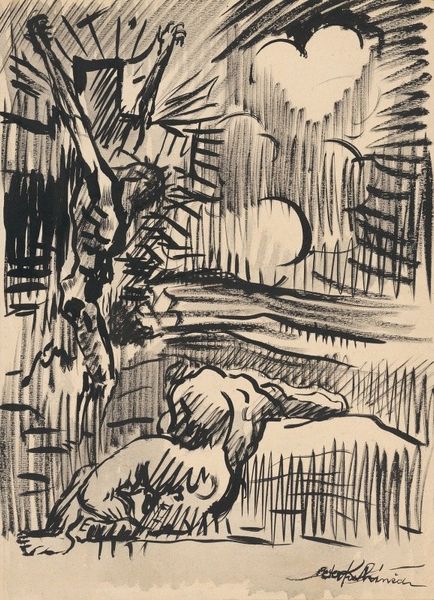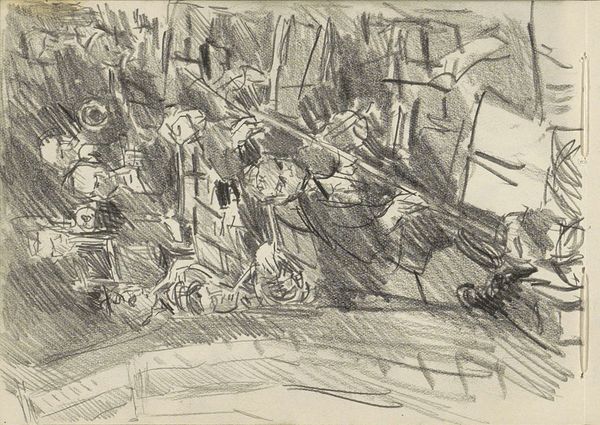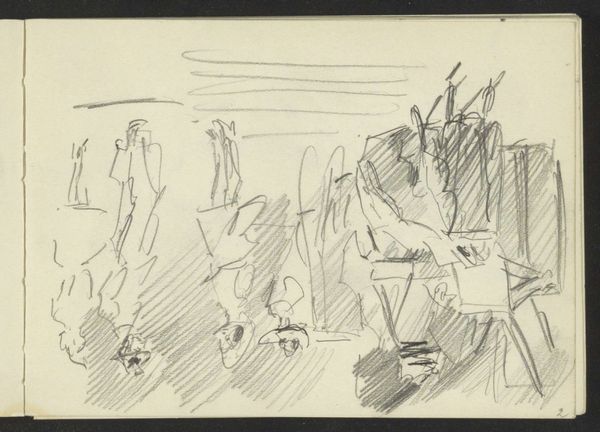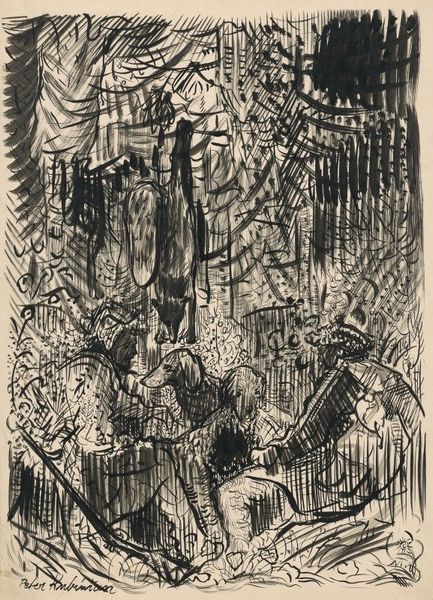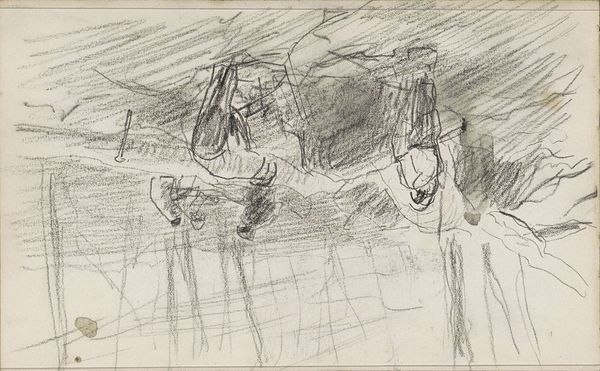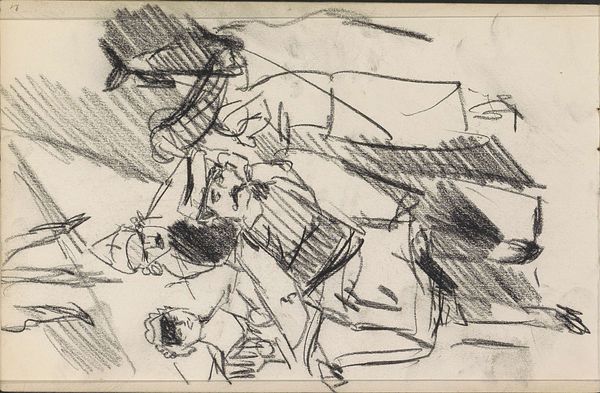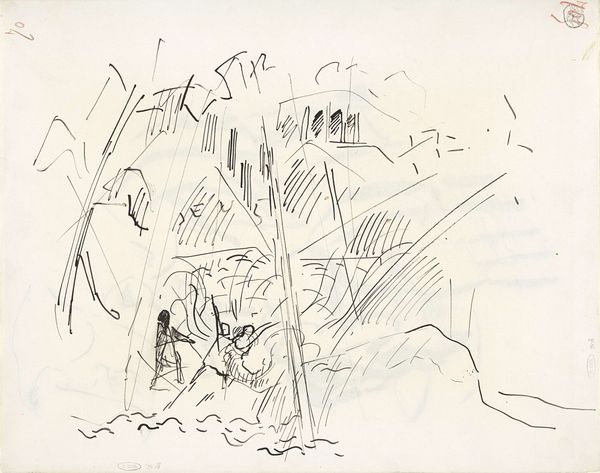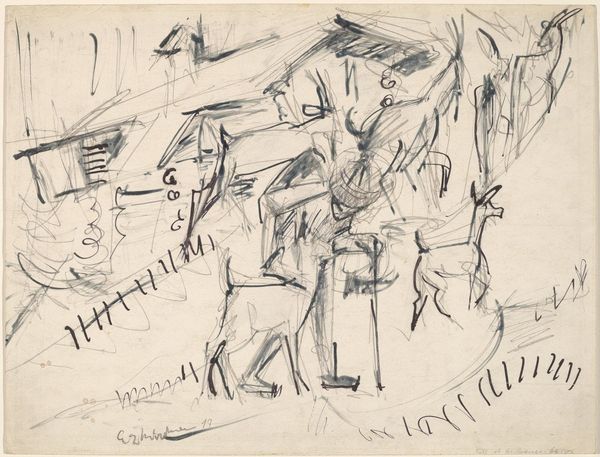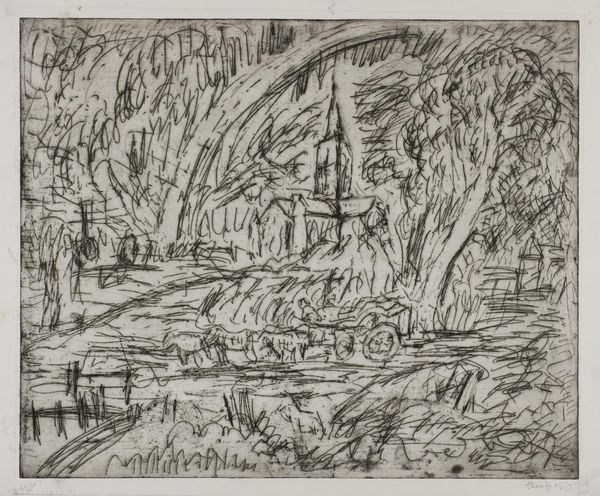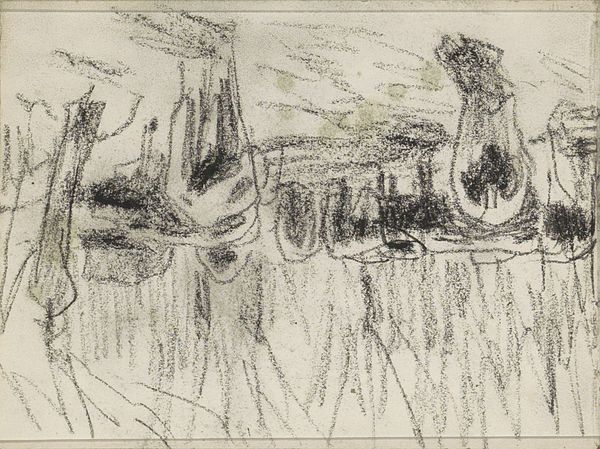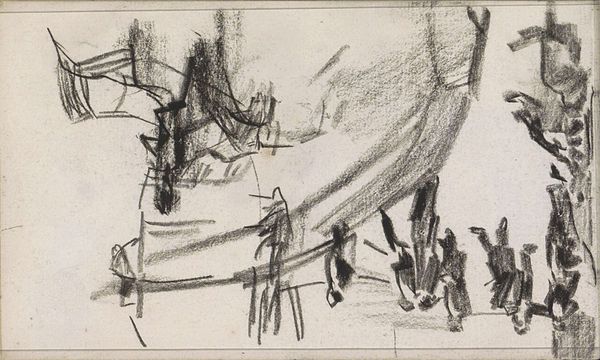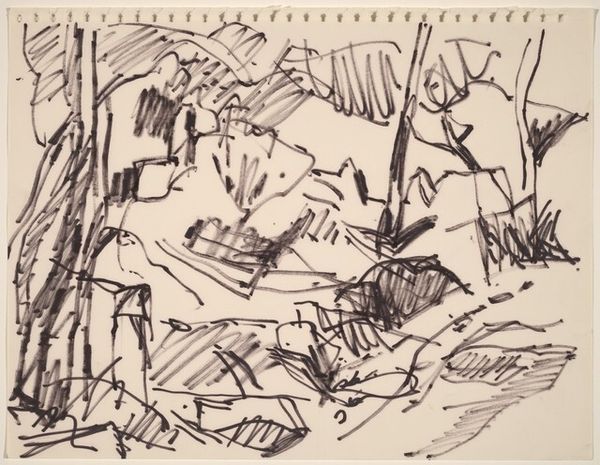
Abramtsevo. The boys at the river. Drawing for the painting 'Boys Bathing'. 1920
drawing, pencil
drawing
landscape
figuration
pencil
Copyright: Public domain US
Curator: The artwork we’re viewing is a drawing, rendered in pencil, titled “Abramtsevo. The boys at the river. Drawing for the painting ‘Boys Bathing’”. It's by Pyotr Konchalovsky and was created around 1920. Editor: It’s quite striking. Even in its sketched state, there's a raw energy. The figures almost seem to burst from the page, and the stark contrasts in the pencil work give it an almost unnerving, unsettling feel. Curator: Indeed. Konchalovsky was deeply engaged with representing peasant life and, particularly during this period, moved between impressionistic landscapes and something with more social realist leanings. This study is intriguing because it highlights his process and interests at the time. Editor: Seeing these boys within that history raises all kinds of questions for me. How are boys and male bodies being portrayed here? Is it simply about innocent play in nature, or is there a deeper commentary about youth, labour, or even emerging socialist ideals embedded in the imagery of leisure and nature? Curator: These are vital questions. What do you make of the choice to create this preparatory work as a drawing in pencil, and not perhaps with colour, given the Impressionistic influence? Editor: Well, the limited palette focuses our attention. We’re forced to consider form, line, and composition foremost. Also, there’s something immediate about a pencil sketch; it speaks to the process of art making. These boys are studies. They're part of Konchalovsky's exploration, not necessarily finished subjects in themselves. It gives agency back to the subjects represented, resisting complete representation. Curator: A compelling point about agency, especially considering Konchalovsky’s interest in reflecting shifts in society during that era. Editor: Absolutely. By engaging with art history and contemporary theory, we reveal so much more than technique or aesthetic intent. Curator: Exactly. Looking closely at these preparatory drawings reveals complex narratives about culture, labor and power dynamics during Russia's turbulent early 20th century. Editor: A reminder that art, in any form, carries the weight of the society it was created in.
Comments
No comments
Be the first to comment and join the conversation on the ultimate creative platform.
